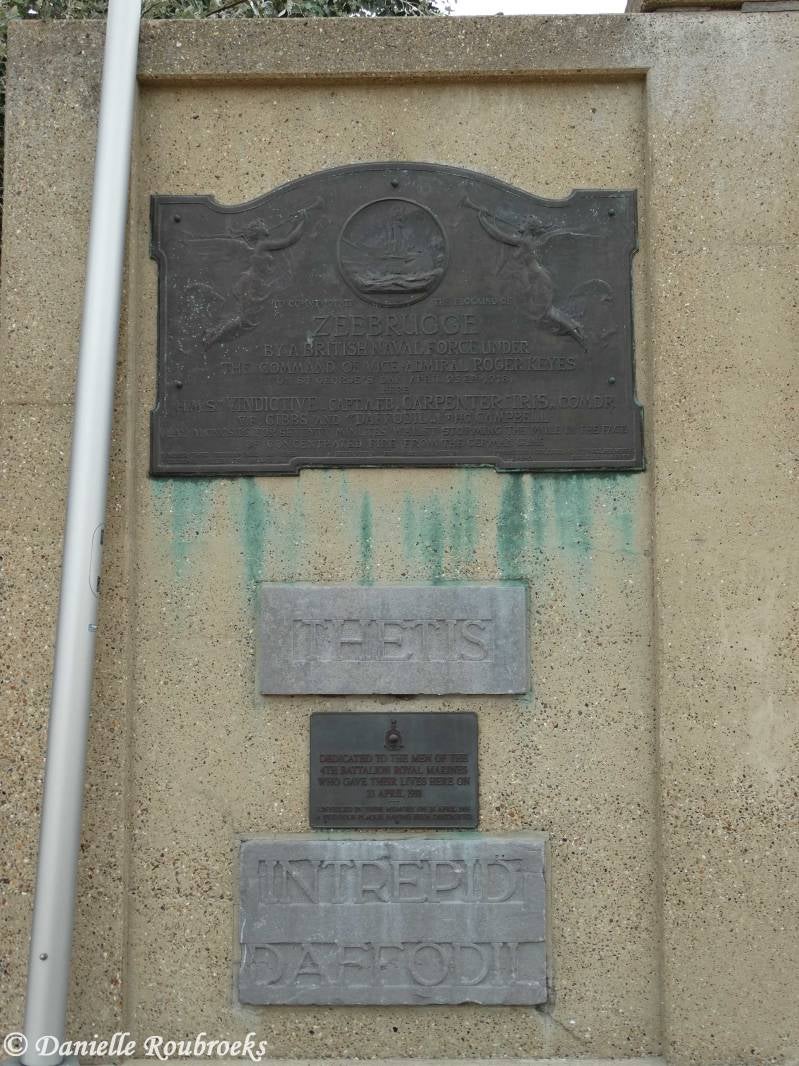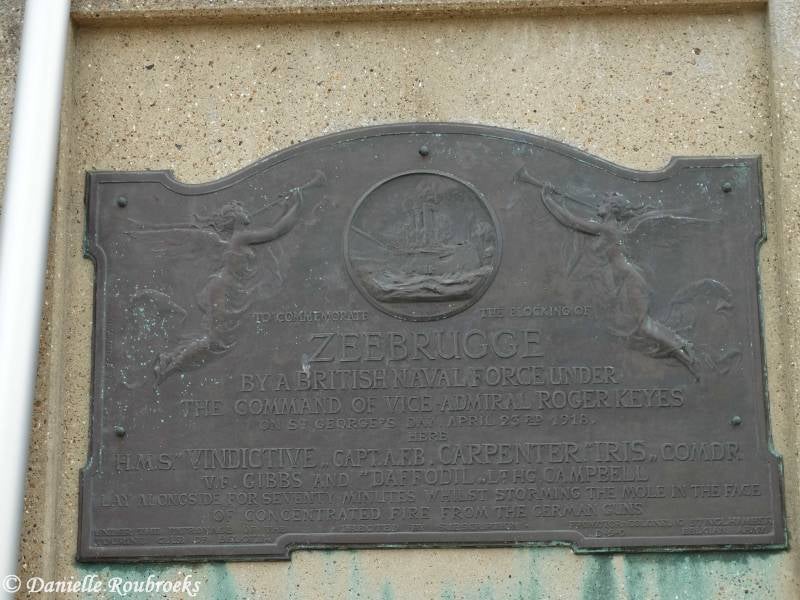Memorial Zeebrugge Raid
History (Source: Wikipedia)
The Zeebrugge Raid (French: Raid sur Zeebruges) on 23 April 1918, was an attempt by the Royal Navy to block the Belgian port of Bruges-Zeebrugge. The British intended to sink obsolete ships in the canal entrance, to prevent German vessels from leaving port. The port was used by the Imperial German Navy as a base for U-boats and light shipping, which were a threat to Allied control of the English Channel and southern North Sea. Several attempts to close the Flanders ports by bombardment failed and Operation Hush, a 1917 plan to advance up the coast, proved abortive. As sinkings by U-boats increased, finding a way to close the ports became urgent and the Admiralty became more willing to consider a raid.
An attempt to raid Zeebrugge was made on 2 April 1918 but was cancelled at the last moment, after the wind direction changed and made it impossible to lay a smokescreen to cover the ships. Another attempt was made on 23 April, with a concurrent attack on Ostend. Two of three blockships were scuttled in the narrowest part of the Bruges Canal and one of two submarines rammed the viaduct linking the shore and the mole, to trap the German garrison. The blockships were sunk in the wrong place and after a few days the Germans had opened the canal to submarines at high tide. The British suffered 583 casualties and the Germans lost 24 men.








